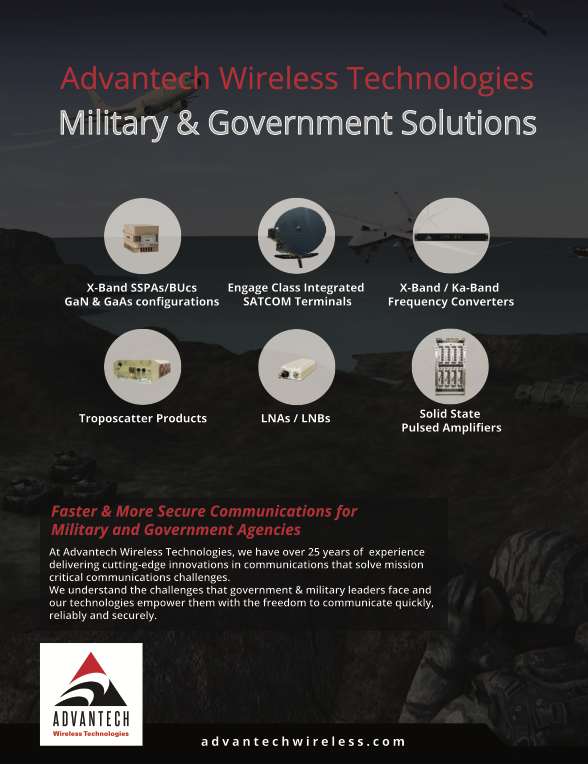When Lt. Gen. Michael A. Guetlein received the call that he had been nominated by President Biden to serve as Commander for Space Systems Command (SSC), one of three field commands under the U.S. Space Force (USSF), his first thought was ‘This is going to be the most exciting and challenging time of my life.’ Guetlein officially assumed command of SSC on 13 Aug. 2021 upon the field command’s date of activation. In this role, he is responsible for SSC’s mission to pioneer, develop and deliver sustainable joint space warfighting capabilities to defend the nation and its allies and disrupt adversaries in the contested space domain.

This includes SSC’s developmental testing, launch, on-orbit checkout, and sustainment and maintenance of USSF space systems, as well as oversight of USSF science and technology activities. Guetlein oversees more than 10,000 military, government service and contract employees nationwide, while managing SSC’s annual Space Acquisition budget of $11 billion for the Department of Defense (DoD).
A respected expert in the global space landscape and next-gen capabilities, Guetlein is well-positioned for this new role.
Previously he served as Deputy Director for the National Reconnaissance Office (NRO) in Chantilly, Virginia, where he assisted the director in managing the strategic and tactical operations of the NRO, and, as Commander of the Space Force Element, managed all Air Force personnel and resources assigned to that agency.
He had a front-row seat observing the unprofessional behavior and challenges being imposed on the United States by the nation’s adversaries.
Prior to that, he served as the Program Executive for Programs and Integration for the Missile Defense Agency. Early in his career, he served as the Director of the Remote Sensing Systems Directorate at Space and Missile Systems Center (SMC) one of several units that transitioned into the new SSC field command.
He said, “Our USSF Chief of Space Operations, General Raymond, has been sounding the alarm and talking about direct ascent weapons, directed energy weapons, nesting dolls in space, cyber hacks and even robots in space. These may all sound like fantasy to the layperson, but what’s happening in space today is not science fiction.
“Make no doubt about it, the threat is real and this is not a fight we can afford to lose. Every corner of our society is dependent on space and our way of life is directly threatened on a daily basis. It is up to Space Systems Command to counter the rising threat with game-changing capabilities that will drastically change the way we fight.”
Countering Threats in the Space Domain
General, what are you most excited to see SSC do that SMC wasn’t quite able to do as a Center?
Lt. Gen. Michael A. Guetlein
While Space Systems Command builds on SMC’s legacy as a center of excellence for acquiring and developing military space systems for the national security space enterprise, SSC is a shift in culture that sees us laser focused on the threat while driving a unity of effort across government, industry, academia and our allies.
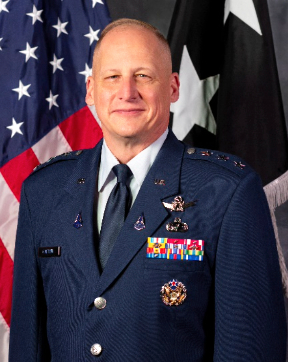
Lt. Gen. Michael
A. Guetlein
As a field command, not only do we have a greater voice in highlighting the threats we face in the space environment to our nation’s leaders, but we get the opportunity to shift away from focusing on various life cycles of a system to anticipating and being responsive to the challenges presented in the contested space domain.
I’m excited to see how the men and women of SSC innovate, acquire, and field out-of-this-world class capabilities. I am excited to help drive a unity of effort across the national security space enterprise. We must go where innovation is happening, and partnerships with industry is our key to enhancing resiliency in the face of determined competitors.
As your organization expands its focus on identifying commercial technologies and aiding inroads for commercial organizations new to doing business with the federal government, why is this important? Do you see commercial/ industry outreach as a significant area of growth in the future?
Lt. Gen. Michael A. Guetlein
Outreach into the commercial and small business sector and, in particular, those businesses outside of the traditional space and defense industries, is crucial and affords us great opportunities that may otherwise be missed.
From the space industry perspective, DoD contracts can be difficult to navigate and some smaller companies might not even try. Our Space Enterprise Consortium (SpEC) was created in 2017 to bridge the cultural gap between military buyers and commercial space startups and small businesses through Other Transaction Authorities (OTA).
To date, we have more than 600 participants in SpEC, the majority being non-traditional companies. That is a huge accomplishment. The OTA’s innovative contracting process allows the SpEC to solicit bids from a mix of member companies, including companies that have not previously done work with the DoD.
Additionally, matching technologies to the warfighter’s needs is a key focus of the newly launched SpaceWERX organization. We stood up SpaceWERX to expand the space industrial base.
Today, they are forming collaborative partnerships between the military’s operational experts and top innovators in industry and academia, as well as leveraging commercial investment that rapidly pursuing new space technologies. The fact is our industry partners are innovating at unprecedented rates and in many cases, they are outpacing our demand signals. We must harvest that innovation to accelerate the space capabilities we are delivering to the Nation and to our warfighters.

As part of the SSC standup, the 30th Space Launch Delta at Vandenberg and the 45th Space Launch Delta at Patrick are now part of SSC — how does this affect acquisition?
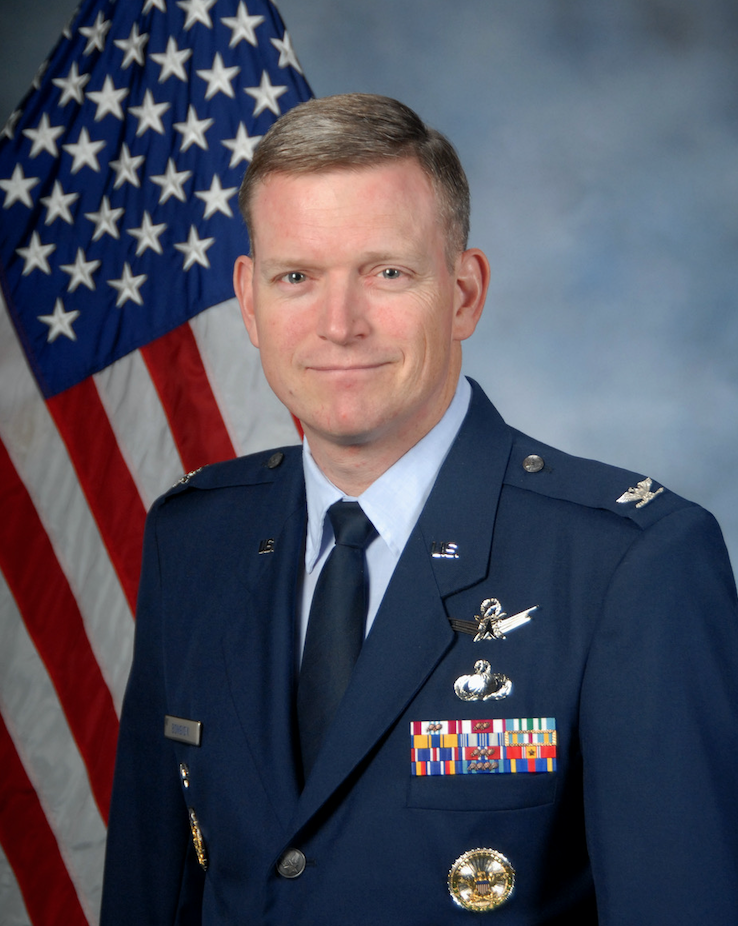
Colonel Rob Bongiovi
Lt. Gen. Michael A. Guetlein
Unity of effort is essential for USSF and SSC to carry out our mission. Bringing the 30th and the 45th Space Launch Deltas under SSC now gives us oversight of all units involved within the space acquisition lifecycle, under a Field Command and a Deputy Commander. Our Space Launch mission focuses on guaranteed access to space. Our National Security Launch team, led by Colonel Rob Bongiovi, has been extremely successful, not only in putting critical new capabilities into our satellites, but also in cutting taxpayer cost through innovative and acquisition approaches.
Both China and Russia appear to be developing anti- satellite weapons. How does this affect the kinds of satellite constellations and orbits SSC will be building?
Lt. Gen. Michael A. Guetlein
We are seeing strategic competition from other nations on the Moon, on Mars and everything between lower orbit and Mars. This isn’t something happening in the far-flung future, and it’s something the general public simply isn’t aware of. The threat is real, it’s evolving, and we need to be ready to counter it and protect our space assets and the capabilities they provide for the nation.
Our adversaries understand how vital space is to the economic and national security of a nation. Directed energy weapons, robots in space, and cyber intrusions are just some of the threats that could interfere with, damage or destroy our satellites. Not only do our adversaries have these capabilities, they have demonstrated the ability to challenge our capabilities and deny our use of space to promote peace and for defense.
SSC is laser-focused on ensuring the U.S. does not fall behind. We’re examining whether proliferated Low Earth Orbit (LEO) constellations could be a way of making constellations more resilient, more cost- effective and as a way to make sure the newest and most innovative technology gets launched into orbit. At the same time, LEO also is more crowded than Medium Earth or Geostationary Earth orbits and has more space debris. We’re looking at a potential role for SSC in developing cislunar space now that NASA as well as other nations are becoming more interested in that area.
We are shifting to a more resilient architecture that is designed for a congested and contested space domain, and an architecture that outpaces the threat. Space Systems Command not only controls $11 billion Space Acquisition budget, but we also have the heavy responsibility of developing and fielding resilient, integrated and highly capable assets. Instead of building a few large “exquisite” satellites that have limited operational life, we’re looking at launching numerous smaller satellites into LEO, a proliferated LEO approach as one way to create more resiliency.
We’re looking at ways to update satellite software and hardware after a satellite is on orbit, so that these expensive space assets can adapt with technological advances and changing threats. We’re going to be working closely with our space industry and international allies and partners to achieve this, as well as with our sister services across the DoD.
If we do not tackle our mission head on, we will fail, our warfighters will fail and our allies will fail. We will not let that happen.
What advice would you give to new personnel joining or considering career opportunities at SSC?
Lt. Gen. Michael A. Guetlein
Space is hard. But it’s also incredibly exciting, as well as personally and professionally rewarding. There’s a tremendous amount of enthusiasm among young people who want to be a part of the Space Force and not only help defend the space capabilities we rely on today, but take them even further. Whether you’re interested in helping to design the next missile-warning satellite or helping to defend against cyber-attacks, we offer amazing career opportunities.
Visit afciviliancareers.com/space-force to learn more.
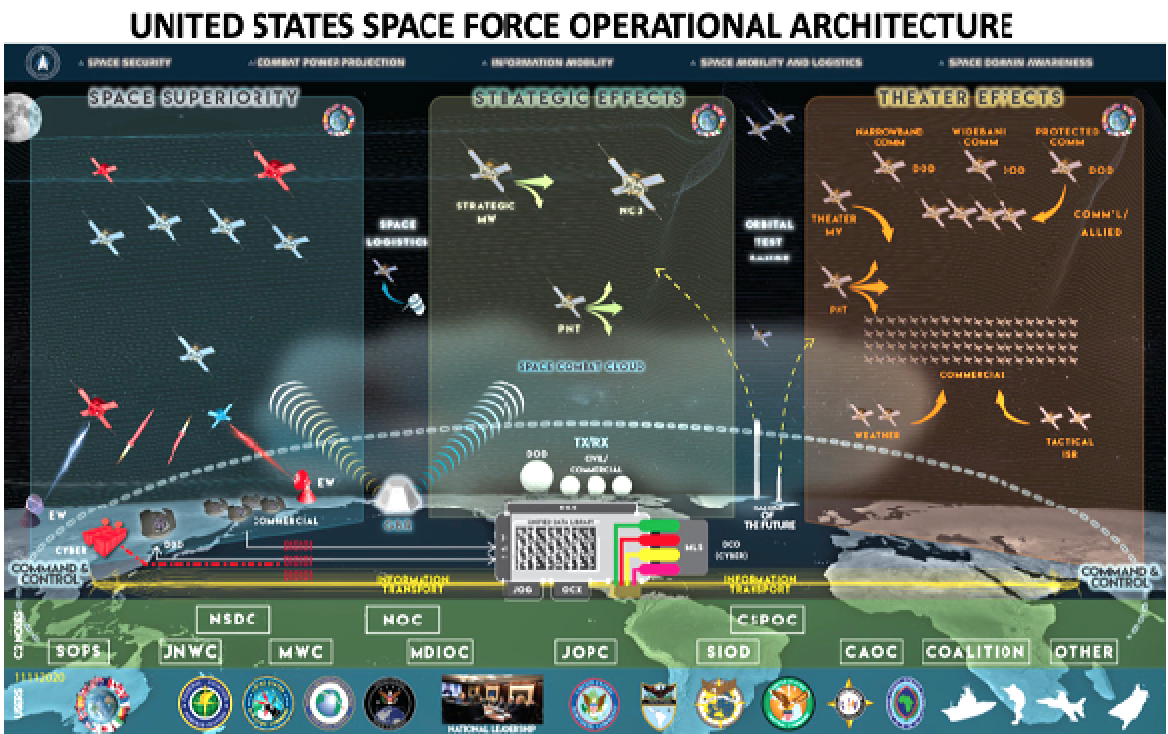
Blueprint For Success in Spacce
SSC ‘Space Architecture’ Provides the Backbone for USSF Core Missions
For the general public, “space architecture” might conjure up visions of Frank Lloyd Wright-designed moon bases, but for the Department of Defense (DoD), the U.S. Space Force (USSF) and space industry providers, it refers to the entire system of systems: from the satellites in space, to the software that controls them. Space Architecture provides usable data to the warfighter and to the launch vehicles that ensure continued access to space.

Brig. Gen. D. Jason
Cothern
“We start with understanding the threats that face our nation, and then determine what requirements and architectures can best meet and counter those threats,” said Brig. Gen. D. Jason Cothern, deputy commander of Space Systems Command (SSC).
Through its SSC field command, USSF executes five core competencies: space security; combat power projection; space mobility and logistics; information mobility; and space domain awareness
(SDA). To execute those competencies, SSC fields and operates a complex space, ground and command/ control/communications (C3) and data architecture for a global and diverse set of users who are increasingly dependent on space capabilities to accomplish their missions. Those capabilities can be considered across four primary functions: space superiority; strategic effects; theater effects; and command and control (C&C).

Space superiority includes space domain awareness and the ability to defend U.S. assets and deny or degrade the activities of any adversary in space. Strategic effects includes missile warning and highly secure communications as well as supplying position, navigation and timing signals via the GPS satellite constellation. Theater effects include tactical applications, including anti-jam tactical communications.
Tying all of these together is command and control, the integration of humans and machines on the ground to rapidly assess, decide and execute the actions necessary to succeed. However, the arena of space is changing and SSC is ensuring its architecture is changing, too, to meet new challenges.
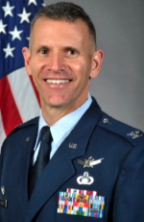
Col. David Learned
“How do we pivot our space architecture?” said Col. David Learned, acting director of SSC’s Portfolio Architect. “What we have up there now was designed for a benign space environment so we’re pivoting towards resilient and defensible capabilities. That’s something we have to be very deliberate about.”
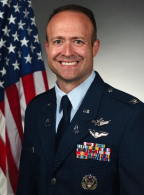
Col. Richard Kniseley
“What we want is an architecture that best supports the warfighter and our allies,” said Col. Richard Kniseley, Space Systems Command Core Team Lead. “So when we start talking about architecture, we look to make sure we have good redundancy and resiliency and that we can support the warfighter and our allies at any given time. We also want a shared, integrated architecture with each different group working together.
“We’ve stood up SSC with the goal to have that integrated architecture to best plan for what’s needed currently, but also to start marking out what are the needs of the future to best protect our warfighter, and how to succeed in the congested - and now contested - space domain,” Kniseley explained.
“In traditional acquisition — say, for an aircraft — the majority of the budget is spent on the operations and maintenance side of the house. You have the ability to bring that airplane down and make repairs or modifications. But space acquisition is kind of flipped onto the other side – about 80 percent of our time, money and effort is spent in research and development in producing these resilient capabilities because you know once you launch it and it’s on orbit, that’s it - and space itself is such a rigorous and dynamic environment.
“That’s one reason we put so much rigor into the beginning part of space acquisitions — because we really only have one shot of getting this right,” Kniseley said. “You need to make sure what you’re sending up is meeting the intent and the needs of the warfighter and the allies we’re supporting. In the past, space architecture relied mainly on large “exquisite” satellites, usually boosted to higher, geosynchronous orbits,” Kniseley continued. “And while many of those systems continue to provide critical data despite having long outlasted their design life, today we can accomplish many of our missions with multiple, smaller satellites, using commercial partners to increase resiliency and tap into newer, emerging technologies.”
NASA and the military are no longer alone in the business of space, and the increasing number of commercial space industry companies are helping to spur exciting new developments in technology and providing new partners for the USSF, Kniseley said.
Among the initiatives designed to help SSC find those new commercial partners is SpEC, the Space Enterprise Consortium, a group of more than 600 companies, with more than half of them nontraditional. Space Force Pitch Day is another event designed to lower the barrier to entry to work with the DoD by helping companies pitch their technological solutions to specific mission area needs within USSF.
In addition to better leveraging commercial services and capabilities, key international partnerships with allies such as the countries of NATO, Latin America and the Pacific Rim are another way SSC intends to evolve its architecture, providing increased capability, resilience and deterrence.
“We can more collaboratively improve our capabilities by offering and taking advantage of offered hosted payload opportunities,” Learned said. “We can also take advantage of shared launches, infrastructure, data and services, and ground assets. We have been working for the past several years to streamline and improve the acquisitions process, from removing structural “stovepipes” in the organization, to pushing decision-making authority down from the commander level to the program executive officer level.”
Now that SSC has formally been stood up, that process will continue. The USSF will be the first military service to have contracting authority not residing at the Pentagon, but instead at the SSC field command level, eliminating additional layers of coordination just to get approvals.
“The Program Integration Council, launched last year and led by SSC, brings together representatives from the Air Force Rapid Capabilities Office, Space Rapid Capabilities Office, the National Reconnaissance Office, the Space Development Agency, the Missile Defense Agency, and Space Operations Command to facilitate the cooperation and synchronization of space systems acquisition organizations supporting the USSF,” Learned said. “USSF also has its Space Warfighting Analysis Center, serving as its centralized force designer to ensure that SSC’s future investment strategy is supported by rigorous, cost-informed analysis.
“We don’t want to have conflicting investment in the overarching enterprise architecture,” he added. “For example, if our force designers are considering a hybrid design incorporating both LEO (low Earth orbit) and MEO (medium Earth orbit), we’d work with all the acquisition organizations on how to leverage existing investments across their portfolios, and how to get after the new elements of the architecture via coordinated integration, demonstrations, services, partnerships, development, etc.”
“We were founded as the Western Development Division in 1954 and we’ve been developing innovative space capacity for more than 65 years,” Brig. Gen. Cothern said. “If you’re looking for the experts -- the people who know how to do space acquisition, it’s here.”
Follow Space Systems Command on LinkedIn.
www.ssc.spaceforce.mil


